Pickled vegetables, fermented beancurd and stinky egg: An art historian's love of preserved foods
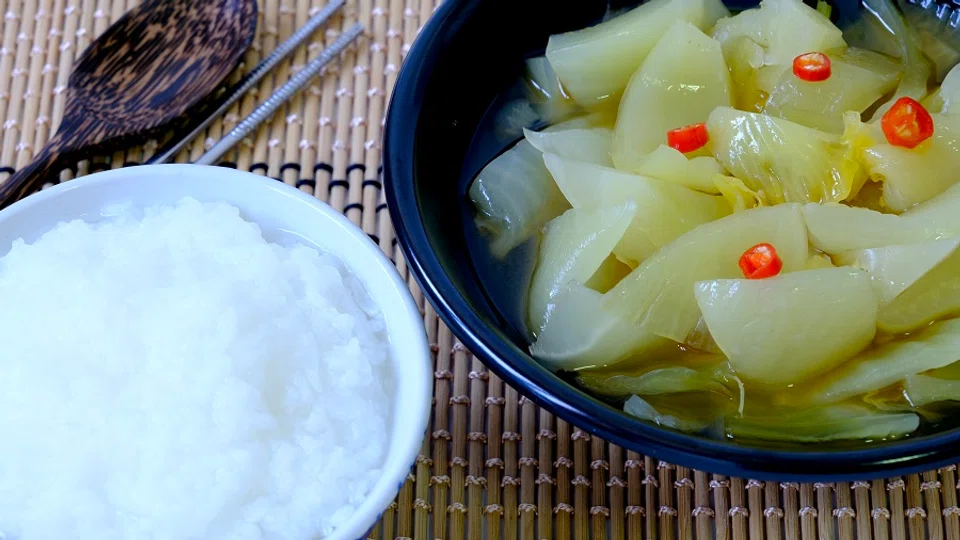
When there were no refrigerators, communities around the world had to improvise. They thought up food preservation methods that have developed into unique food traditions worth revisiting.
In Chishang, I had the pleasure of enjoying a bowl of preserved radish chicken soup (菜脯鸡汤 caipu jitang) with a Hakka family. Other than a 60-year-old charcoal-black preserved radish and some old ginger, there were no other ingredients in it. The soup was rich and left a lingering taste in the mouth. It had been a long time since my senses were jolted awake like that - incredible.
To make the preserved radish, the family salted slices of radish, and stored them in an earthen jar in a dark, dry place under the bed. 60 years later, the radish came into its own, harnessing the salty, the bitter, the sweet - turning from spirited to reserved, from domineering to calm, all in one deep flavour.
If we have never lived without a refrigerator, it may be hard to imagine that food can be stored for six decades.
Are we patient enough to wait 60 years for a radish to transform? Do we even have 60 years to wait for a life to mature and be enriched?
Humans take time to find their path, as do material things.
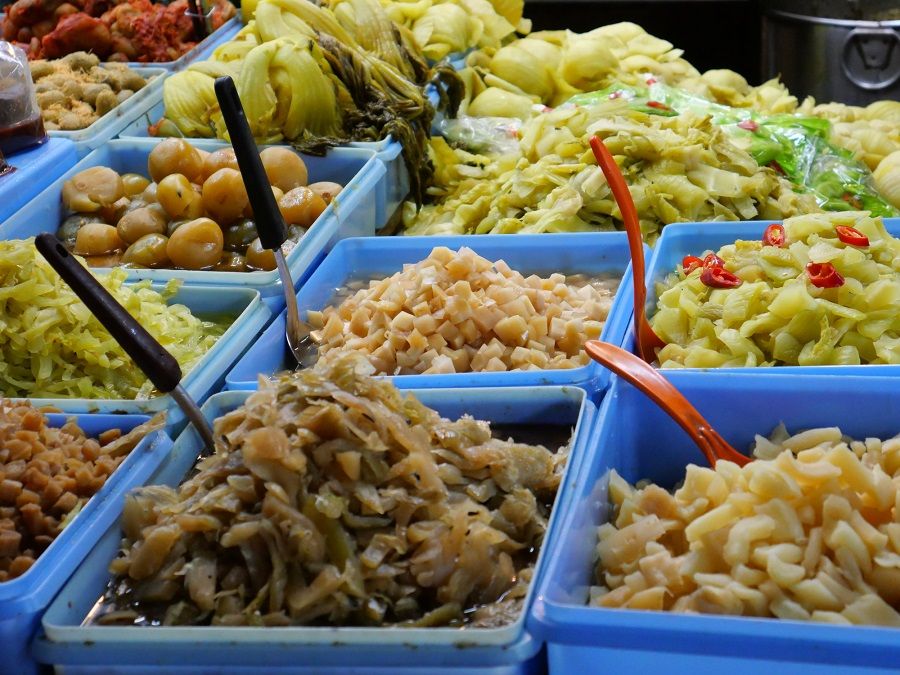
I've also tasted a 40-year-old dark amber-coloured preserved radish chicken soup. The difference of 20 years gave it a different aftertaste. It is easier to buy off-the-shelf 20-year or ten-year preserved radishes. These have a dark coffee-brown colour. They are quite similar to the dried radish commonly found and are much lighter in flavour.
Recently, people have been throwing in 60- and 40-year-old preserved radish with fresh radish when they make their soup. All three generations of radishes are mixed together, having a dialogue and forming an interplay of old and new. Of course, this yields yet another flavour.
Time a priceless ingredient
Time is perhaps the key to spiritual attainment.
Humans take time to find their path, as do material things. I recently saw that a bottle of vintage wine was auctioned for NT$11,015,000. While that seemed rather far-fetched to me, I'm not a wine connoisseur and did not dare make further comments.

But I have tasted a rich and aromatic 30-year-old balsamic vinegar with some bread, so I understand the power of time.
A bottle of 1990 Chambertin is not cheap. I drank it with my old friends and the people who know their stuff. Happy and a little tipsy as we were, it was like experiencing the tattered elegance of Paris after its glamour has faded away. Having seen it all, one can sit quietly in a corner, watching the city go by and even tolerate its racket and frivolity.
The joys and sorrows of this life or the lack thereof are often recorded in our taste buds. Their memories are few but evocative - like elegant poetry, only a few words are necessary.
Because it was forgotten, it became a rare treasure. Such treasures are usually found in small quantities and they are only shared among close friends. Money can't buy these things.
When I visited someone in the eastern region of Huadong Valley (East Rift Valley), the chicken soup with 40-year-old pickled olives I tried there was also phenomenal. And it had nothing to do with money - the family did not preserve the olives hoping that they would rise in value. Sometimes they would even say, "Grandma pickled them and left it under the porch. We even forgot that it's there."
Because it was forgotten, it became a rare treasure.
Such treasures are usually found in small quantities and they are only shared among close friends. Money can't buy these things.
In the era without refrigerators, people like the Inuits and other indigenous people who live out in the cold all year round do not find it difficult to preserve food - simply dump them in the snow and retrieve them when you need it.

My mother said that when she lived in the northern region as a young girl, there was a big barrel in the middle of the courtyard where mantous (馒头, steamed buns), baozis (包子, a variation of mantous with various fillings) and braised pork were kept. These would all be cold and hard. When people wanted to eat them, they would need to be reheated (馏) in a steamer.
The word liu (馏) is uncommon nowadays. It refers to using steam from boiling water in the cauldron to reheat frozen cooked food. It is different from steaming (蒸).
Mother had the habit of preparing a lot of food during Chinese New Year - 100 mantous, 100 baozis, 100 braised soya sauce eggs... She loved the number 100.
Food in the big barrel was eaten throughout the old calendar years from layue (腊月, the last month of the Chinese calendar) to the second day of the second month of the Chinese calendar. Nobody cooked during the first month (正月 zhengyue) of the Chinese calendar.
Mother had the habit of preparing a lot of food during Chinese New Year - 100 mantous, 100 baozis, 100 braised soya sauce eggs... She loved the number 100. Without a refrigerator or a big barrel, the food would be quickly shared with our neighbours due to the warm weather.
Typically, people preserved food by salt-curing them or air-drying them under the shade. Or they might use both methods together, or choose to seal the items with oil or smoke them.
Savoured with a sip of red wine, eating a sliver of ham was like tasting the sands of time.
The art of charcuterie
When I was little, rows of whole chickens and ducks, along with slabs of cured meat and sausages that Mother made were always hung up to dry in the shade. These meats were rubbed with pepper salt and treated with strong liquor before being air-dried. Drops of oil from the cured meat would be glistening in the sun and emanating the scents of the wind and the sun as they fell to the ground.
Friends who have been to Spain would recall the rows of smoked ham hanging from the ceiling of small bistros. The slabs of ham were "beautiful and sexy" in figure and looks. With a glass of wine, one could watch the chef expertly carve the ham into delicate slices, each perfectly marbled and translucent like red onyx. Savoured with a sip of red wine, eating a sliver of ham was like tasting the sands of time.
The Mediterranean coast boasts an array of salt-cured, air-dried and smoked meat. These were originally food preservation methods for survival, but have now become inventive ways of bestowing rich and strong flavours on food. In the small Italian city of Parma, the winds carry with it the delightful fragrance of ham. A thin slice of ham, a wedge of sweet melon, and one idle summer day goes by. Joys and sorrows are left unspoken.
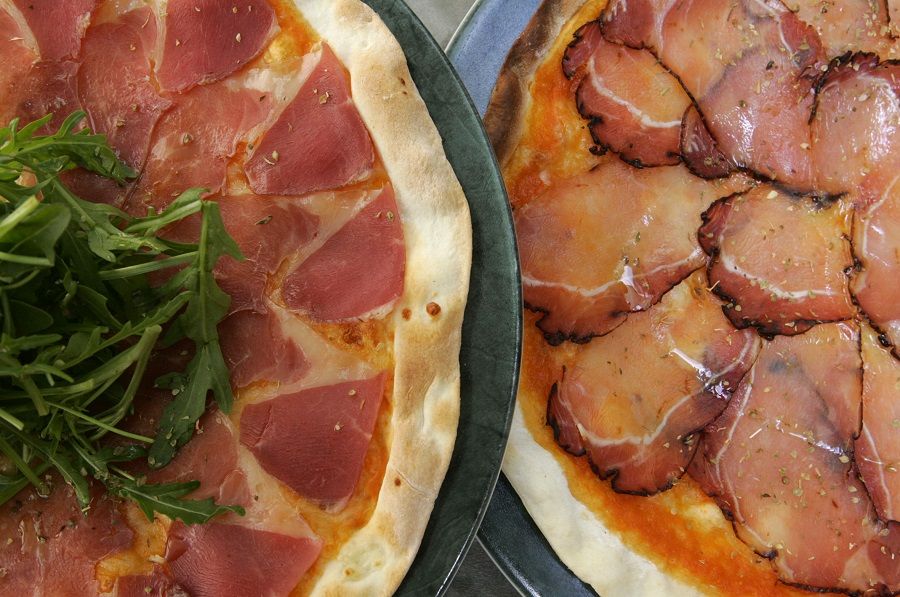
Every ethnicity has their own history and methods of preserving food in salt and drying them in the wind and under the sun so that they do not spoil.
Japan has a wide array of salt-pickled food but they are often too salty and numbs your brain after just a small bite. Such salty food is meant to be eaten with rice - just a little will do, along with some seaweed paste, a little salted roe and a mouthful of rice harvested in Shiga prefecture. This can be quite delectable too.
My favourite Japanese pickled foods are the ones made with miso, an ingredient which comes in a wide variety such as red miso and white miso. It can either be used to season meat before grilling or to boil soup. While they are both made from beans, different cooking methods result in different flavours.
A good bowl of miso soup is neither too strong nor too bland. It is actually plain and quiet, like Yasujiro Ozu's movies.
The general impression is that Japanese ingredients are not overcooked so that the original flavour can be retained. Wasabi must be freshly grated and the tuna must only be lightly grilled to taste the "wabi-sabi" (a Japanese aesthetic of imperfect beauty) that literati love to talk about. It's a bit like Basho Matsuo's Haiku poem consisting of 17 on in the 5-7-5 pattern, where adding anything more would be a sin.
Yet everyday ingredients like miso and the pungent natto are not simply "wabi-sabi". You'd have to find an old granny in one of the rural villages to cook you a bowl of bracing white miso soup topped with spring onions and Japanese parsley to understand how incredibly rich the flavours are. It was not until Haruki Murakami wrote Abandoning a Cat: Memories of my Father at the age of 70 that he was able to put in words the richness and beautiful simplicity of this soup.

It is said that Japanese miso dates back to the Jomon period. Human taste has a long history - it is the principal axis on which humanity and civilisations pivot.
I cook my miso soup like this: first, boil the soup with dried anchovies, seaweed, radish and matsutake mushrooms. Once ready, turn off the heat and slowly add white miso into the soup. When the bowl of creamy cloudiness is ready, sprinkle some bonito flakes and spring onion, and serve.
A good bowl of miso soup is neither too strong nor too bland. It is actually plain and quiet, like Yasujiro Ozu's movies. Tokyo Story, Late Spring, Good Morning... All of them are masterpieces. And they still bring tears to my eyes each time I watch them. In his movies, ordinary households always ate mackerels and drank miso soup.
Pickled and tickled
I haven't had my favourite pickled Japanese ginger for a long time. They look like young ginger and also like fingertips, and are rouge red in colour. Pickled in salt and vinegar, eating some with rice for breakfast is refreshing and clean, calming my body and soul.
Mother made much pickled food, including plenty of pickled vegetables. To make pickled cabbage, for instance, she would wash and dry the cabbage before rubbing each leaf with stir-fried pepper salt. She would add julienned carrots, radishes and cucumbers to the mix and place them in a dark brown earthen jar. As the mouth of the jar had some grooves, she poured some water to fill in the gaps to prevent air and water from entering. The vegetables in the jar were then left to slowly ferment. Mother added Kaoliang liquor to her pickled vegetables so that there was always a fragrant and refreshing aroma after the fermentation process.
"Do you hear it?" Mother asked. I didn't, in all honesty. But I loved pressing my face against the smooth and icy cold earthen jar, as if I was listening to a fetal heartbeart.
Fermentation is the incubation of changes wrought through time. Mother always reminded us not to open the lid as and when we liked. She asked us to press our ears against the jar and quietly listen to the sound of fermentation.
"Do you hear it?" Mother asked.
I didn't, in all honesty. But I loved pressing my face against the smooth and icy cold earthen jar, as if I was listening to a fetal heartbeart.
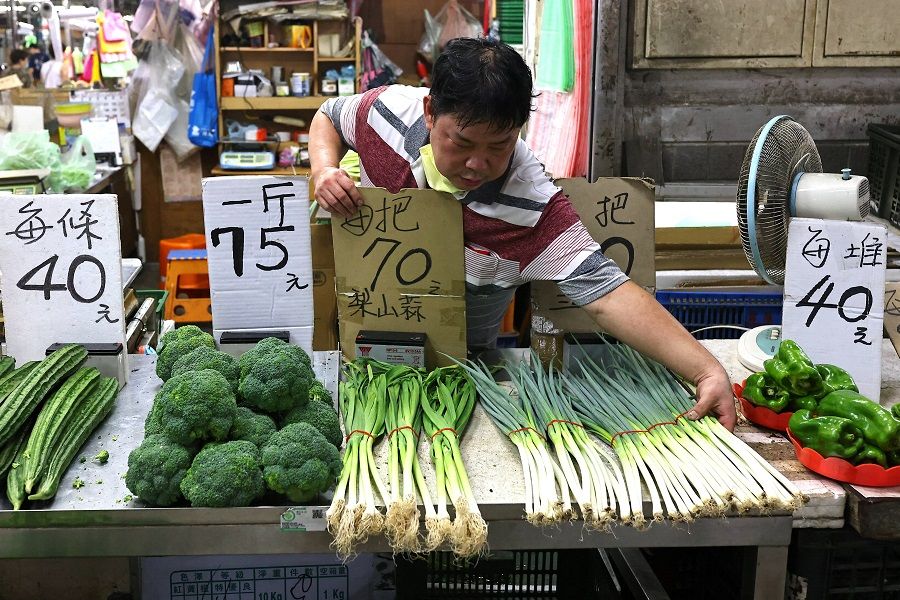
I loved pressing my face against the earthen jars used to ferment wine. Each jar was greyish brown in colour, around 40 to 50 centimetres tall and had a small mouth, with a wax-sealed cork. I felt the texture of burnt clay when I brushed my face against its surface. Pottery making has a history of over 10,000 years. People then had already known how to add water to knead the clay, mould it into shape, place it in a kiln, add firewood, and then fire them up. This was the process for humankind to learn about Earth, Water, Wood and Fire. The Five Elements are here except Metal. Metal only came into the picture thousands of years later.
With my face pressed against the earthen jar, it was as if I was drawing nearer to learning the story of 10,000 years. Mother said, "Listen quietly..." I seemed to have really heard it - the bubbling sound of fermenting grains. Did humankind also listen to this sound for 10,000 years?
One night, I felt like the bubbling sounds had travelled back from ancient times. They were like the flowing universe, carrying with them the fragrance of wine that was overflowing from the earthen jar.
I woke up in the morning and realised that I was not dreaming. Someone had touched the wax and the fermenting wine had popped the cork. The house was filled with the wine's aroma, and red wine lees were flowing out of the jar.
After Mother cleaned up the mess, she coated fish, chicken and pork with the red wine lees, and either steamed, deep-fried or made soup with them. We ate a variety of such cuisine for the next few days.
... the best fermented bean curd is often the ones handmade by ordinary folks. They are made in small quantities and rarely available on the market.
Hence, pickling recipes - whether with oil, salt, vinegar, sugar, honey, alcohol or fermented bean paste - came about from food preservation needs.
Mother attempted to make fermented bean curd before, but gave up because she didn't succeed.
The best fermented bean curd in the world
I love fermented bean curd. There is no better breakfast than eating it with porridge every morning. Having tasted fermented bean curd from Yilan to Pingtung and from Hsinchu to Chishang, I found that they all have different flavours and are even richer and more diverse than Japanese miso.

However, the best fermented bean curd is often the ones handmade by ordinary folks. They are made in small quantities and rarely available on the market. For example, the spiced fermented bean curd made by the elderly grandma at Chishang's Yuchan Yuan Bed and Breakfast. Only a few jars are available each time I visit, often with a note that says to wait six months before they can be eaten.
Since they would go crazy for such a stinky cheese, why are they unable to tolerate fermented bean curd from Chishang?
Whenever I go on a holiday in Paris, I would bring along rice from Chishang and fermented bean curd from Yuchan Yuan. I must have them for breakfast before I get excited enough to go see Mona Lisa at the Louvre.
If I do not take care of my taste buds first, it feels as if doing anything is simply too frivolous.
Regrettably, my French friends do not feel the same. Whenever I unpack my breakfast, they would poke at the fermented bean curd suspiciously with their chopsticks, grudgingly try a mouthful and immediately scrunch up their faces, as if they had eaten poop.
This got me curious. France is known for its notoriously pungent Epoisses de Bourgogne, which smells like someone who hasn't showered for a long time. Since they would go crazy for such a stinky cheese, why are they unable to tolerate fermented bean curd from Chishang?
Ah, this odour is different from that odour. It is clear that foul smells are subject to ethnic discrimination too.
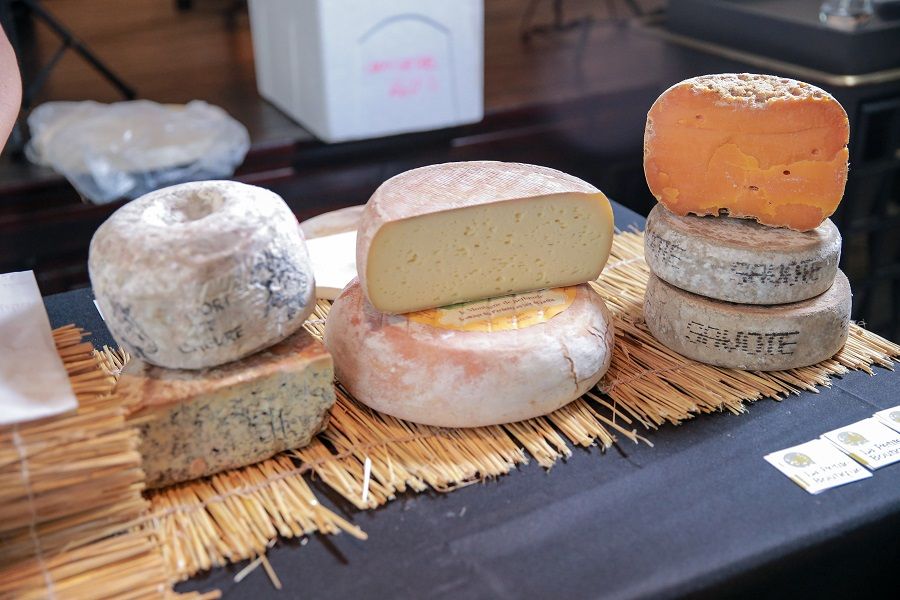
Give those who love to label themselves as "equal rights advocates" a taste of France's Epoisses or Shaoxing in Zhejiang's top three fermented and stinky foods and they would know that they've been letting themselves off too easily.
Shaoxing's top three fermented and stinky foods are all famous dishes. I adore Lu Xun's writing. His books, such as The True Story of Ah Q, Medicine, and Diary of a Madman, touch on the painful, tragic and detestable parts of a nation, and I do not know whether to laugh or cry. A friend from Shaoxing told me, "If you can't swallow the three fermented and stinky foods, you can't say that you love Lu Xun."
And I really failed the test. Among the three stinky foods is the "stinky egg", which is an egg with a dead duck embryo inside. I could not swallow it. As I vomited, I was reminded of a part in Medicine where a mantou was dipped in the blood of freshly decapitated human heads as a cure for tuberculosis, and vomited even more badly until tears streamed down my face. Indeed, our sense of taste is more acute than our imaginations set off by literature.
I still remember the first time I tried Epoisses - it was so pungent that it was intolerable. I am thankful for what my French teacher taught me, "A nation has to be sufficiently old to embrace stinky food."
Blessed with an abundance of mustard greens
I have never experienced true poverty or great famine to the point where I had to eat a rotting corpse - or even a family member's corpse - to survive... I guess my perception of a foul odour is just at the level of a literati's fastidiousness?
I live in Dapu village in Chishang, a Hakka enclave. They are also good at air-drying their food.
Mustard greens are harvested in winter. They look like little trees which are plump and lush. But there are so many of them; how is one to finish eating or selling them? So the leftovers are dried on the top of the wall and made into pickled mustard greens (酸菜). They taste good when added to hotpots or stir-fried with chilli, and can be kept for a long time.
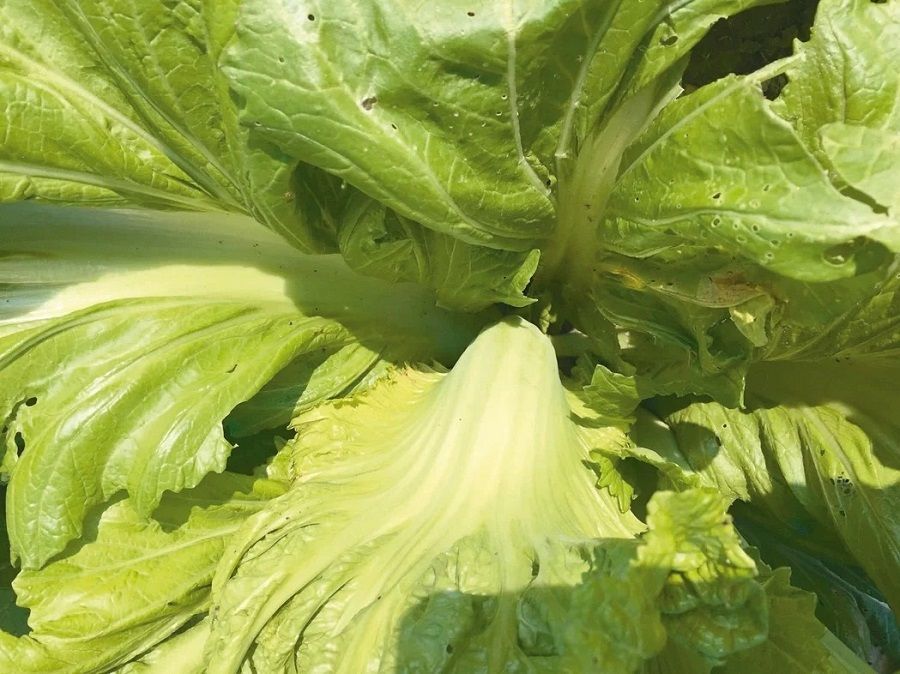
But the crop is still too abundant. After some are used to make pickled mustard greens, the leftovers are stuffed into jars and bottles and made into fucai (福菜, pickled mustard greens that are further cured in salt), which is commonly used in Hakka delicacies.
Fucai must be tightly packed and free from moisture, almost airtight. Then, it can be kept for two years without turning bad.
What about the remaining mustard greens after some are made into fucai? Cure them with salt, air-dry them and wrap them in a bundle. Voilà, preserved mustard greens (梅干菜).
And this is how frugal the Hakkas are, cherishing everything they have.
I tasted absolutely heavenly pork belly with preserved mustard greens in Fuli. The preserved mustard greens served in Fuli Stay (a bed and breakfast in Fuli), is Mdm Chen's signature dish, made by the owner herself. They are all bundled up, sufficiently salty and dry, and never go bad.
When I am tired after painting, I would sit in the courtyard and enjoy the sun and the wind, while watching the mustard greens being air-dried on my wall. What a lovely day. Life doesn't get any better.

Of course, mustard greens can be stored in refrigerators. But without a refrigerator, different types of mustard greens are born - pickled mustard greens, fucai, preserved mustard greens - yet they are all still mustard greens.
Thanks to the refrigerator, fresh mustard greens can be properly stored. But, if power outages persist, why not try making pickled mustard greens, fucai, and preserved mustard greens?
I am glad that I live in Dapu village, where families hang up their food to dry in the shade. They often press my doorbell, asking if they can use the wall around my courtyard to dry their mustard greens. I stay in a corner house along the row and have a long perimeter wall that's around 1.5 metres tall - perfect for drying vegetables. When I am tired after painting, I would sit in the courtyard and enjoy the sun and the wind, while watching the mustard greens being air-dried on my wall. What a lovely day. Life doesn't get any better.
I have also seen the tribes on Orchid Island drying rows of flying fish under the sun and in the wind. Day after day, day after day, until a red jewel-like light comes through. The catch of the ocean is thus preserved in such a natural way, providing for the survival of man.
I suddenly thought of the poor villages in northern Shaanxi where families would hang bundles of garlic, chilli, corn and sorghum at their doors.

During the pandemic, a friend sent me a big jar of vinegar-brined garlic from Yunlin's Citong township. He asked me to drink it once every morning and night to detox. Vinegar-brine pickling is also a traditional food preservation method.
Sitting in my courtyard, enjoying the breeze and basking under the sun, I suddenly thought of the poor villages in northern Shaanxi where families would hang bundles of garlic, chilli, corn and sorghum at their doors. Golden yellow and vibrant red bundles would sway in the wind and glisten under the sun. Their food is dried with the wind (风 feng) and (sun)light (光 guang) in this manner. Ah, it turns out that fengfeng guangguang (风风光光, lit. "wind and light", meaning "grand and magnificent") actually describes nature's good wind and good sunshine.
This article was first published in Chinese on United Daily News as "五行 九宮 蔬食4".
Related: The old days of eating well without a refrigerator | Taiwanese art historian: Why a mother's winter melon soup is best | Taiwanese art historian: The five elements of cooking in the olden days | Life and life lessons in the old markets of Taiwan | Taiwanese art historian: Reflecting on the indigenous culture of Orchid Island | Taiwanese art historian: My mother waited for her soldier husband to return from war, just like Wang Baochuan
